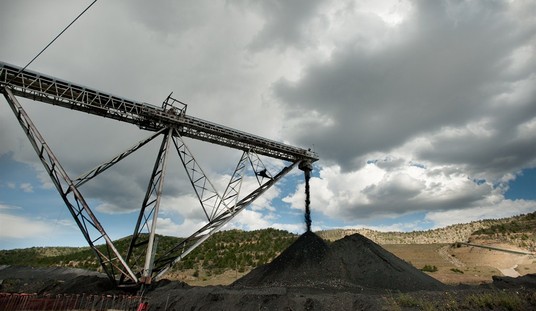The Presidents’ Gatekeepers, a Discovery Channel documentary which aired in September, explores the history of the White House chief of Staff position. Produced by French journalists Gedeon and Jules Naudet, who previously produced an acclaimed 9/11 documentary, Gatekeepers features interviews with Jimmy Carter, George H. W. Bush, and all 20 living White House chiefs of staff.
Is the nation well-served by having a person who is essentially the “deputy president”? (James Baker, who served as chief of staff to Reagan and Bush, called it the “second most powerful job” in government.) Perhaps not. Arthur Schlesinger Jr. wrote: “Nothing has done more to isolate presidents from reality than the relentless expansion of the presidential entourage.” Former New York Governor Averell Harriman, who served in Harry Truman’s cabinet, observed: “A large staff around a president can waste, rather than save, his time, and its simple existence can lessen, rather than increase, the hours he has for quiet thought and independent work.”
From George Washington onward, American presidents have always employed influential advisors. Washington’s cabinet included Thomas Jefferson as secretary of state and Alexander Hamilton as secretary of the Treasury; Lincoln had his “Team of Rivals” during the Civil War; Franklin D. Roosevelt had his “Brain Trust.” First ladies, other presidential relatives and friends, leaders from various fields, and the usual collection of hacks, opportunists, and influence-peddlers have always sought the president’s attention with varying amounts of success.
However, only since the 1950s has the White House chief of staff position held such power and prominence.
Until the Depression, the White House Staff was generally small, and various presidents relied on cabinet members to implement policy. The vast expansion of government programs during the New Deal under FDR caused him to seek and get congressional approval for the Reorganization Act of 1939, which allowed FDR to hire six new White House assistants. The White House staff continually grew afterwards. By the 1970s, roughly 500 people served on the White House Staff; now, it is estimated that the staff exceeds 2,000 with an annual budget of over $300 million.
In 1946, John Steelman was appointed the first official “assistant to the president,” thus leading to the creation of the White House chief of staff position. But former New Hampshire Governor Sherman Adams, under President Eisenhower, is responsible for escalating the power of the position. Former General Eisenhower prized a hierarchical staff structure with strict rules for advancing policy ideas and strong lines of authority. Sherman Adams enforced this discipline, earning him the nickname “the Abominable No-Man.”
Democratic Presidents Kennedy and Johnson sought to downplay the chief of Staff role. Kenny O’Donnell under JFK and Marvin Watson under LBJ served as “appointments secretary,” but did not have anything approaching Adams’ power. Richard Reeves wrote that Kennedy “was not interested in organization charts. … He did not think of himself as being on top of a chart; rather, he wanted to be in the center, the center of all the action.”
Under Richard Nixon, the position really began to assume its current prominence; since then, every president has had a chief of staff. Critics charged that Nixon’s inner circle excessively controlled access to the White House and enabled the president’s natural paranoia, thus leading to the Watergate scandal. In 1992, Schlesinger noted disapprovingly that the size of the White House staff took a “quantum leap” under Nixon, and that FDR “fought the Great Depression with a staff smaller the president’s wife has today; he fought World War II with a smaller staff than the vice president’s.”
Dick Cheney, who served as both vice president and as President Ford’s chief of staff, told the Naudet brothers that he believed the latter job was more powerful.
The subtitle of the Discovery Channel documentary is “The World’s Toughest Job.” The average tenure for chiefs of staff has been less than two years. As the role and power of the chief of staff position have escalated, so have tales of arrogance, pettiness, megalomania, and bad judgment. (FDR said that one prerequisite to being a successful White House aide was “a passion for anonymity.”) A lot of them have been fired.
Many chiefs of staff have gotten themselves and their boss in trouble since the 1950s: Ike’s Sherman Adams was forced to resign when it was revealed that he had accepted a fur coat as a gift; during the Nixon Years, H.R. Haldeman famously went to prison due to the Watergate scandal; Carter’s leader of the “Georgia Mafia,” Hamilton Jordan, was accused (falsely) of using cocaine and called “Hannibal Jerkin” by Democratic House Speaker Tip O’Neill after failing to meet with congressional leaders for over two years; Ronald Reagan’s second chief of staff, Don Regan, presided over the Iran-Contra scandal and was forced out; John Sununu, under the first President Bush, recommended breaking the Republican “no new taxes” pledge (he was also forced out), a decision that helped sink the 1992 Bush re-election effort; Bill Clinton’s “Arkansas Mafia” always seemed to be getting into trouble, and Clinton was impeached. Both George W. Bush and Barack Obama went through numerous chiefs of staff.
None of the presidents considered among the greats — Washington, Jefferson, Jackson, Lincoln, Teddy Roosevelt, Franklin Roosevelt — had dominating chiefs of staff. Arthur Schlesinger Jr. points out that those presidents functioned as their own chiefs of staff.
Not every chief of staff has been ineffective: Alexander Haig played a key role in persuading Nixon to resign (though he later made the disastrous gaffe of saying that he was “in control” after President Reagan was shot); former Senate Majority Leader Howard Baker helped rescue the Reagan presidency in the wake of the Iran-Contra scandal; and John Podesta helped Bill Clinton survive impeachment in 1999. But they are the exceptions.
The job is almost certainly too difficult and complicated for one person. Such a track record strongly implies that the troubles of this office go beyond one or two flawed personalities. The fundamental problem is that the job of “assistant president” is nearly impossible, thus almost guaranteeing failure. The whole concept of a “gatekeeper” for the president is simply wrong: keeping people and ideas away from a president adds to his isolation. The president must be accessible.
Whatever the possible future directions for the White House staff, change is definitely needed. Bill Daley, the second chief of staff for President Obama, called James Baker for advice and was told: “Congratulations, you’ve just got the world’s worst (bleeping) job.”
The newly powerful White House chief of staff has proven to be a disastrous development. It is time to downsize the position.









Join the conversation as a VIP Member